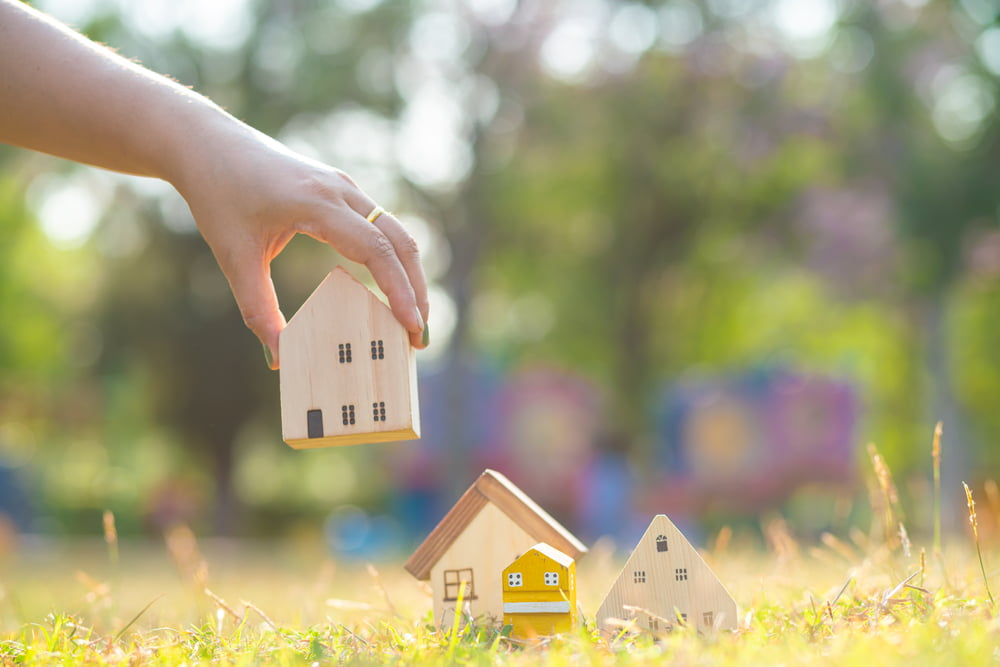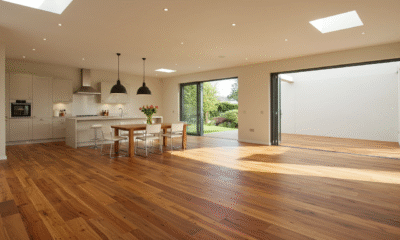

Sustainability
Key Things to Remember When Building a Sustainable Home
Home ownership continues to be on the rise, and research shows that the new generation of homeowners are far more concerned with sustainable home design than the last. The market for green buildings is expected to grow from $116.46 billion in 2020 to $150.95 billion by 2030, according to Research and Markets.
Despite declining by more than $3 billion from 2019-2020, the demand for more sustainable home design isn’t going away any time soon. If you’ve been planning to build a new home and want it to be as eco-friendly and sustainable as possible, read up on these tips to help that vision come to life.
Adapt Your Design to Your Surroundings
One of the core pillars of eco-friendly design is to be low impact. You would want to modify your surroundings as little as possible, if at all. To this end, you will have to design in accordance with the environment. Work with nature instead of against it. If you plan it right, you can even make nature work for you. For example, if you incorporate a sloping building site into your design instead of leveling it, provided that the slope isn’t unstable, you can save up on heating costs by sheltering part of the house against cold winds. This has the added advantage of preserving the integrity of the soil, and the microbial life within that helps support the local ecosystem.
This also applies to the local greenery. It may have already occurred to you to try not to cut down trees and other important flora in the process of constructing your home. However, you might be unaware that adding certain types of plants can be just as harmful as subtracting them. Landscaping with your favorite plants and flowers is great for personalizing your garden, but any non-native flora can come with significant disadvantages. For one, non-native flora can outcompete native flora if they happen to reproduce outside of your control. There’s also the fact that they usually require more water and resources to maintain.
Opt For More Compact Designs and Greener Materials
You may already know about the trend of constructing smaller, more compact homes. The advantages to this style run deeper than lower real estate costs. Smaller homes are more energy efficient as they require less power to cool or heat. Their construction and maintenance also leaves a reduced footprint on the environment as they require fewer resources to carry out. This doesn’t mean that you should live in a tiny house, but it would be beneficial for both you and the environment to make better use of your space.
When planning the layout of your home, take your lifestyle into account. Which parts of it can you do without? Do you see any empty space that can be trimmed away without consequence? Do so, and you’ll optimize not only your resource consumption but make you lean towards greener lifestyles as well. Making effective use of recycled materials goes hand in hand with this practice. Companies that create practical home components out of refuse have been steadily carving out their own subsector in the construction material industry in recent years. Using their services will save you a large sum of money in the process of building your home, which you’ll appreciate a lot more if you’ve taken out a construction mortgage to pay for it.
Depending on how much you save and your lender’s policies, you can resolve your debt sooner by making extra payments using the money you save. It would be best to use a mortgage payoff calculator for this so you can free yourself from your debt faster. Some lenders penalize excessive early payments, as it prevents them from collecting interest. Hence, it’s advisable that you account for savings before taking out a mortgage.
Maximize Resource Efficiency
Solar panels and wind turbines are energy staples for any green home, but with a little research, you may find out that nature can give you even more power. For example, if the house is going to be close to a body of running water, you can install a micro hydropower system to tap into the flow energy of the stream or river. If you can assemble enough turbines, you can let hydropower take over home systems that operate regularly, such as the lights, your HVAC system, or your refrigerator. Streams that don’t dry up or freeze over can offer much more consistent power than solar or wind, so they’re something you won’t want to pass up if available. Other sources should be considered as well, such as biomass and solar heating for extra electricity, heating, and cooking.
However, not all natural power sources offer the best output everywhere, and some might not be available to you. Hence, it’s best to supplement the practice of tapping into such sources by investing in efficiency-improving tools and home features. Green roofs are a great example of this. These are essentially inlaid roof planters that help remove heat from the air in summer and keep warm air in during winter. Tools such as automatic thermostats and energy star-marked appliances also compound to provide a substantial amount of power savings. Couple these with home features such as double-glazed windows, superior insulation, and a recirculating hot water system, and you’ll have yourself a resource-efficient home.
Thanks to the technology currently available to us, it’s entirely possible to build a home with only a small fraction of the carbon footprint that most homes have. All it takes is some careful planning and clever resource management. You will be glad to have an eco-friendly home.


 Environment10 months ago
Environment10 months agoAre Polymer Banknotes: an Eco-Friendly Trend or a Groundswell?

 Environment11 months ago
Environment11 months agoEco-Friendly Home Improvements: Top 7 Upgrades for 2025

 Features9 months ago
Features9 months agoEco-Friendly Cryptocurrencies: Sustainable Investment Choices

 Features10 months ago
Features10 months agoEco-Friendly Crypto Traders Must Find the Right Exchange


























